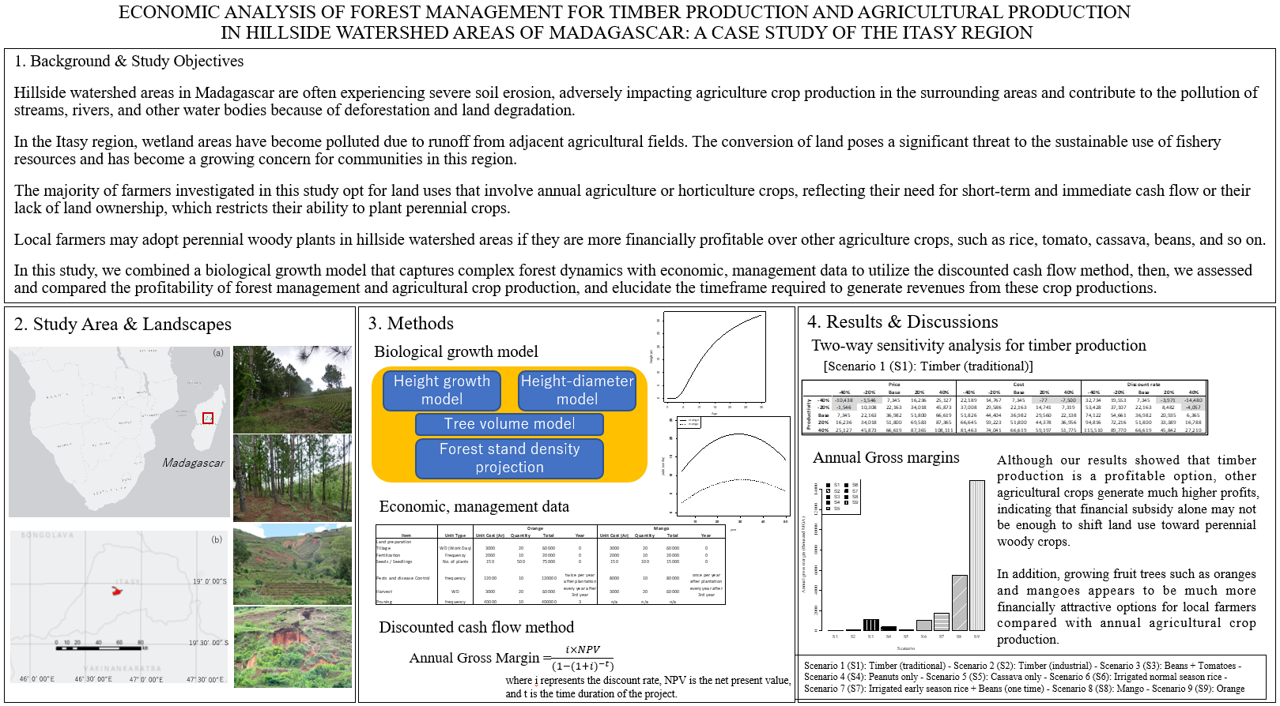Abstract
The concept of hydrological tank model was well described into four compartments (tanks). The first tank (tank A) comprised of one vertical (qA0) and two lateral (qA1 and qA2) water flow components and tank B comprised of one vertical (qB0) and one lateral (qB1) water flow components. Tank C comprised of one vertical (qC0) and one lateral (qC1) water flow components, whereas tank D comprised of one lateral water flow component (qD1). These vertical water flows would also contribute to the depletion of water flow in the related tanks but would replenish tanks in the deeper layers. It was assumed that at all lateral water flow components would finally accumulate in one stream, summing-up of the lateral water flow, much or less, should be equal to the water discharge (Qo) at specified time concerns. Tank A received precipitation (R) and evapo-transpiration (ET) which was its gradient of (R-ET) over time would become the driving force for the changes of water stored in the soil profiles and those water flows leaving the soil layer. Thus tank model could describe th vertical and horizontal water flow within the watershed. The research site was Cisadane Upper Catchment, located at Pasir Buncir Village of Caringin Sub-District within the Regency of Bogor in West Java Province. The elevations ranged 512 –2,235 m above sea level, with a total drainage area of 1,811.5 ha and total length of main stream of 14,340.7 m. The land cover was dominated by forest with a total of 1,044.6 ha (57.67%), upland agriculture with a total of 477.96 ha (26.38%), mixed garden with a total of 92.85 ha(5.13%) and semitechnical irigated rice field with a total of 196.09 ha (10,8%). The soil was classified as hydraquent (96.6%) and distropept (3.4%). Based on the calibration of tank model application in the study area, the resulting coefficient of determination (R2) was 0.72 with model efficiency (NSE)of= 0.75, thus tank model could well illustrate the water flow distribution of Cisadane Upper Catchment. The total water yield was 2.789 mm year-1 from 3,624 mm year-1 of total annual precipitation. The total water yield comprised of a total runoff of 47.39% and 49.23% of sub surface flow and base flow.

